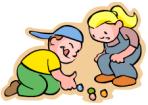Video Interaction Guidance (VIG) is an intervention where the clients are guided to reflect on video clips of their own successful interactions. VIG works by actively engaging clients in a process of change towards better relationships with others who are important to them (Kennedy 2011, p21).
Cross and Kennedy (2011, p73) assert that ‘VIG is also effective because of the attuned interactions between the guider and parent’ and remind us of the research findings that in counselling and psychotherapy client factors account for 40% of change and relationship factors for 30% of change (Lambert 1992; Lambert and Ogles 2004). So what the client brings to the VIG sessions – for example, in terms of their strengths, perceptions, values, interests and resilience – and the relationship which is built between them and their VIG guider are clearly crucial to a positive outcome.
VIG is usually a short term intervention, typically consisting of three ‘cycles’ where a cycle refers to making a video of the client interaction and then meeting for a shared review with a VIG trained guider. It is an approach which has similarities with solution-focused and strength-based approaches as it seeks to highlight (ideally through the client’s own reflection about what they observe themselves doing on video) their resources for coping and achieving success. Thus it aims to make client factors explicit and encourages them to own these and use them to achieve success in the future. The relationship factors including respect, acceptance, collaboration and validation from the VIG guider come into play as soon as contact is made and an agreement to use the VIG intervention is reached.
As a VIG trainee guider, I developed an appreciation of the amount of preparation required for the cycles of VIG – giving the client an understanding of the process and reassuring them, recording their permission and goals, sorting out the logistics of who and where to video and being conscious of progressing with my own skill development. These had very much been the focus of my initial training, practice and supervision when working with teachers and colleagues in Stage 1. (VIG has three stages of supervised practice after an initial training course). However, I don’t think I had fully experienced and appreciated the depth of relationship which can be built when using VIG until I began to work in Stages 2 and 3 with families with very challenging circumstances. These relationships seemed to be built very rapidly and were, I believe, due to the practice of using the attunement principles and values and beliefs of VIG. Clients bravely shared their difficulties and concerns and powerful, new narratives emerged which we could acknowledge and celebrate together – often with a sense of amazement.
My method of working with these families also evolved to incorporate elements of counselling as I found it natural to have some discussion before looking at video just to check in with how things had gone since the last session and also when deepening the discussion in shared review. These conversations were a rich source of information about the client’s thoughts about the effectiveness of the VIG process and their between-session reflections on the changes in their own beliefs and behaviour. (Practising these counselling skills in intense situations was not always something which I found I had opportunity do in my everyday tasks as an educational psychologist.)
It was personally quite moving and affecting to share clients’ deeply personal low and high points and I began to be concerned about how to bring the relationship to an end in a way that would meet their potential emotional needs and, indeed, mine. It appeared that the VIG guider role challenged my, usually more detached, professional ‘helping’ role because of the highly attuned relationship it created. The belief of therapy practitioner Irvin Yalom, cited in Jamieson (2003), that the client should matter to the therapist is reassuring in this regard. The importance of trying to ensure that I had done my best to support families sustain the positive gains also took on a sharper focus. I thought it would be disappointing to us both if the time and emotional energy invested, alongside the mutual respect built, did not manifest in longer term positive change.
I had the recommended tools to use at the end of the VIG intervention cycles, such as the Target, Monitoring and Evaluation (TME) sheets (Dunsmuir et al 2009), the Traject plan (Kennedy, Landor & Todd 2011) and CD with the video clips of the family to help share, celebrate and evaluate the impact of VIG. The TME sheets are a straightforward record of client goals and their rating, on a scale of 1 to 10, of a pre-VIG baseline, ‘hoped for’ and actually achieved situation in relation to these goals. The Traject plan as originally termed in the Netherlands was a planning tool for further ‘treatment’, but in the UK is usually used to celebrate progress in the client’s interactions, any wider positive effects in their lives and to identify any ‘working points’. Specifically, it contains sections on basic communication, daily life, development of child, development of parent and neighbourhood/community and is normally co-constructed (see Kennedy 2011, pp35-37). However, I couldn’t help wonder whether these would be enough to sustain change once the visits came to an end. I don’t think that these concerns were that the families couldn’t manage without me visiting regularly, rather that I had an appreciation about how difficult circumstances had been for them and that the potential for them to become overwhelmed might still be there from time to time. This seemed even more important for the families that I did not expect to work with again – one was living outwith my geographical area of responsibility and the other was involved in a project for mothers with babies under one year old (not an age group educational psychologists traditionally work with). Also, the evidence of the VIG impact I was aware of at the time was mostly immediate rather than long term; indeed Fukkink, Kennedy and Todd (2011) noted that this type of impact ‘merits attention’ (p101) suggesting a dearth of experimental evidence.
What I will describe below is an additional tool which I hoped might record the client’s strengths in a different way to the existing tools and would serve as a personal, readily accessible and attractive reminder of key discoveries or new narratives we’d shared during the VIG sessions. Being able to be reminded on a regular basis of their progress, I hoped, would help support them on days when things didn’t seem to be going well. In terms of ending the relationship, on reflection, I probably also wanted to present them with something personal and unique, something that might signal that I had spent time making something for them because I valued the relationship we’d had. Like a small act of kindness, it had the effect of making me feel better about ending the relationship.
I have presented this within two case studies to illustrate the challenges for the families and how the ‘record of strengths’ tool devised related to their circumstances and the changes that the VIG intervention brought about. Names have been changed for confidentiality purposes, although clients have given permission for their information to be shared for research and development.
Case Study 1
The family were referred specifically for VIG by a Social Work autism practitioner who was concerned that the mother was not coping and that the primary school-aged boys would need to be taken into care. Bridget was described as not being able to put into place advice and guidance from various professionals and interventions such as parenting classes over many years.
Bridget’s goals were for the boys and herself to be calm (less shouting and being physical with each other), for the boys to be able to play together and for the family to have fun together. Bridget was able to communicate her thoughts and feelings in a very open manner and it became clear that she reflected a lot on what had led to the family situation and on the discussions we had in shared review of video. She described herself as having very little self-confidence. However, she actually had a wealth of knowledge and strategies about behaviour management and parenting and through discussion of the video clips, these could be acknowledged and celebrated. She also had a deep desire to be a good parent and a positive member of her community, to whom she could bring a number of personal talents and strengths. The Target, Monitoring and Evaluation (TME) sheets and the Traject plan were very helpful tools in recording description of changes in the behaviour of the children and Bridget. However, I wanted to leave her with something simpler, more colourful and attractive which she could perhaps display on the fridge or on the back of the kitchen cupboard door and quickly refer to when things weren’t going so well or when she wasn’t feeling so positive about her own abilities.
I didn’t have a great deal of time available, but taking some of the key points from our discussions, shared reviews, the content of the TME sheets and co-constructed Traject plan, I designed a sheet with colourful illustrations taken from clipart. I will admit that I don’t think I had a clearly thought out rationale for this, although I was clear that the statements should be positive, related to her strengths and should incorporate her own words – these being familiar aspects of the solution focused approach educational psychologists in my service used regularly. Certain images were pertinent to her family; for example, the chess player related to her ideas to incorporate more board game time as a family as it had gone so well in a videoing session and also when she’d tried it when not being videoed. I think too, I was aware that pictures and images could be powerful for communicating a message, both in support of the written word and also on their own. I was also aware of positive affirmations which are designed to promote self-change in an individual by challenging dysfunctional beliefs, often sub-conscious, and serve as reminders and inspiration. However, these are written in the first person as ‘I’ statements rather than being written by another person.
BRIDGET – You’re Brilliant!
 You have lots of good strategies for coping with the boys’ behaviour.
You have lots of good strategies for coping with the boys’ behaviour.
You really want to be a good parent.
 You are good at reflecting on your behaviour and the effect it has on the boys.
You are good at reflecting on your behaviour and the effect it has on the boys.
You are really interested in your children.
 You share a loving relationship with your boys.
You share a loving relationship with your boys.
You have gained in confidence that you can cope with the boys.
 You can see the benefits of being assertive with the boys.
You can see the benefits of being assertive with the boys.
 You are having more fun as a family.
You are having more fun as a family.
 You are learning how to give both boys the attention they need.
You are learning how to give both boys the attention they need.
 You are becoming an active member of your community.
You are becoming an active member of your community.
You are re-discovering the real you 
My hope was that these positive statements would remind Bridget about her own strengths and encourage her to continue to use these. I posted these to her and hoped it would give her a nice, uplifting surprise.
Subsequently, I had a meeting with Bridget and the autism practitioner as preparation for a meeting about the boys at their school, which I couldn’t attend. Bridget said that she was looking forward to sharing her TME sheets, her Traject plan and the positive statement sheet with the teachers and other professionals. Bridget really appeared to value these documents and the autism practitioner thought they might help change the climate of the forthcoming meeting to a more positive tone, as in the past they had been very problem focused. The educational psychologist for the family and school confirmed later that Bridget had brought all the documents along with her to the meeting and had been able to contribute in a more positive and assertive way than previously and this had had a noticeable positive effect on the school staff and tone of the meeting.
As if to confirm my concerns about the long term sustainability of the effects of the VIG intervention, the story didn’t quite end there because the autism practitioner telephoned me about six months later to say that the situation appeared to have deteriorated and to ask whether Bridget could have more VIG. I telephoned Bridget and, through discussion with a strong counselling element, it became clear that a change in household make-up had occurred and this had disrupted the more positive family rhythm and routine she had created. With this temporary situation coming to an end, Bridget felt that she could resume the pattern of daily family life which had brought about such positive change and could refocus her energies on the development of her parenting skills and herself. She thought that she therefore didn’t require another VIG intervention. As a result of the conversation, I designed another positive reminder sheet incorporating new strengths she had told me about and highlighting the ways in which she was continuing to be successful.
 BRIDGET – YOU’RE STILL BRILLIANT!
BRIDGET – YOU’RE STILL BRILLIANT!
You are interested in children and have lots  of great ideas for games and activities to play with them.
of great ideas for games and activities to play with them.
 You get up early on school mornings and run the Breakfast Club. Children behave well for you there and miss you if you are not there.
You get up early on school mornings and run the Breakfast Club. Children behave well for you there and miss you if you are not there.
You still have good ideas for managing the boys’ behaviour and  reducing the potential for conflict.
reducing the potential for conflict.
You are still good at reflecting on incidents and working out what might help.
You know to include them in positive behaviour management plans.
 You have continued to build a better relationship with Connor.
You have continued to build a better relationship with Connor.
Even on the worst days: 
- You have kept calm and kept Levi safe
- You have stuck to your word even when he has pushed you to the limit.
You are still interested in learning new things and meeting new people.

As there was no further contact with this family, I have no evidence of the impact of this second reminder sheet.
Case Study 2
The family were referred specifically for VIG by a Health Visitor who shared the mother’s concern that she had not bonded with her baby. Stephanie had been diagnosed with post-natal depression and had received some counselling sessions. Stephanie was not confident to go out of the house with Maisey on her own.
Stephanie’s goals came easily to her and she had clearly given a lot of thought to aspects of her relationship with her baby she wanted to improve upon. These were to improve her body language, use a calmer tone of voice and increase her confidence with her baby. We had four cycles of VIG together including a video of her pushing her baby on her own in a pushchair outside, then walking by herself with her baby to meet with me for a final shared review. Stephanie was another deeply reflective and self-analytic person, who lacked confidence in herself and didn’t recognise her good parenting skills. A turning point came for her when she realised that she could have a ‘conversation’ with her baby without words requiring to be spoken by both participants.
As with Bridget, I thought that a visual positive reminder sheet which she could refer to easily might help her on the days when she was lacking in self-confidence. (The original has a border of stars around it!). Again, many of the statements include phrases or words Stephanie used herself in our sessions.
STEPHANIE – You’re A Star! 
 You are the ‘good mother’ you wanted to be – we have proof on video!
You are the ‘good mother’ you wanted to be – we have proof on video!
You are tuned in to Maisey and know what she wants and  when she is ‘talking’ to you. You often do this without even realising!
when she is ‘talking’ to you. You often do this without even realising!
You are fantastic at reflecting  upon your thoughts and actions. Focusing on the positives is the start of changing things for the better.
upon your thoughts and actions. Focusing on the positives is the start of changing things for the better.
 You have high standards for yourself, but have learned that it’s OK to take a break from being the ‘perfect mum’.
You have high standards for yourself, but have learned that it’s OK to take a break from being the ‘perfect mum’.
You have gained in confidence that you can cope with Maisey. 
 You are enjoying the ‘fun’ times with Maisey.
You are enjoying the ‘fun’ times with Maisey.
You are beginning to function  as Stephanie, Maisey’s mum, and run less on auto-pilot.
as Stephanie, Maisey’s mum, and run less on auto-pilot.
 Thank you for taking part in V.I.G.
Thank you for taking part in V.I.G.
About a year after the VIG intervention, Stephanie was interviewed by a trainee as a follow-up for our small-scale mother and baby VIG project. She still had the positive reminder sheets displayed in the kitchen and said that she had been referring to them.
How can we ensure ‘happy endings’ in VIG interventions?
Whilst VIG is not normally referred to as a counselling process as such, I believe that there are many aspects in common, particularly within the shared review process. The guider takes a person centred approach, receives initiatives to let the client know that they have been listened to and attempts to elicit the person’s own strengths and solutions rather than giving expert advice. Guidance on satisfactory endings from this field is therefore worthy of consideration. Many of the articles about the end of a counselling relationship appear to assume a longer term intervention than that usually offered for VIG, although some do mention that powerful relationships can still be built with brief interventions. They emphasise that when such a relationship ends it can evoke feelings of abandonment, anger, and grief especially in people who have suffered painful losses in their past. Furthermore, and to echo my own feelings about the end of the VIG relationships, they underline that the ending impacts on both therapist and client. I like Ryan Howes’s (2008) analogy that the ideal termination of a therapeutic relationship feels similar to a graduation. He described this event as bittersweet for both parties:
It’s bitter because a productive, engaging relationship is ending. The routine of the sessions, the unique language shared and the supportive environment are drawing to a close. It’s also sweet because this ending marks a new era of independence while applying the skills therapy provided. (Ryan Howes, 2008, paragraph 9)
Taking this information as a whole, there appears to be consensus (Noel (2012), Syracuse Univerity (2016), Wood (2016)) that good endings to the therapeutic relationship should contain several ingredients:
- clear expectations that there will be an end point, ideally with set timeframes;
- both parties have an opportunity to express what the process has been like;
- the client has opportunity to say what they feel has been gained by the intervention;
- the therapist also has the opportunity to express how they think the client has changed and grown;
- coping strategies are reinforced with the reminder to clients to draw upon them in the future;
- the ending is mutually agreed and goodbyes shared;
- opportunity for later check-in or further sessions.
I think that VIG practice as I understand and have experienced does include the ingredients of a positive ending or termination as we are explicit with clients that it is a short-term intervention, there are opportunities for both parties to review and evaluate whether goals have been reached (via the TME sheets and Traject plan) and for clients to say how it has felt to go through the process (for example, evaluation questionnaire). There may also have been times when the guider has offered an opinion of the client’s progress, either through the shared reviews or through the Traject plan. The Traject plan can be used to document how the client hopes to use their identified strengths and coping strategies in the future. The ending is understood and agreed by these processes and by leaving video clips for the family to keep.
Acknowledging that whilst the relationship built during the sessions has boundaries it can still often be experienced as a deeply genuine relationship, allows us to be prepared for the bittersweet emotions which are likely to be experienced at the end of this relationship. The positive reminder sheets described above were a further tool to serve as a brief, accessible summary of information in existing, widely used documents which might support sustainability of the positive effects of the VIG intervention, and also, a more personal ‘gift’ to the client at the end of an enjoyable relationship.
These are by no means perfect. I recognise that they are primarily written by me (although purposefully drawn from the discussions within my delivery of the VIG process) and it could be argued that they should be co-created with the client, as with the TME sheets and Traject plan or written as positive affirmations in the first person. This might increase impact in terms of client self-efficacy and therefore long term gains, but would not have the same quality of a surprise gift. Using stills from the videos of the family themselves would be an alternative to the clip art. Some of the trainee guiders I supervise have chosen to present families with booklets of stills with captions about positive aspects of a child’s presentation and strengths of the parent.
Deliberations about the ideal way to construct and design these handy positive reminders become redundant, however, if there is no evidence of their usefulness to clients either in terms of sweetening the end of the VIG relationship or in assisting them with their goals afterwards. Currently I only have anecdotal evidence in a few cases that these were appreciated and useful. This is something for me to objectively evaluate in future VIG interventions. On a more general note, I would like to suggest that a valuable area of study and research might be to gather client evaluations on the usefulness of the TME sheets and the Traject plan as tools as part of the ending of the VIG relationship. The benefits of these documents for practitioners are obvious in providing evidence of the effectiveness of the intervention, but are they also valued by clients and in what ways?
Author:
Helen O’Donohue, Educational Psychologist, VIG trainee supervisor, Highland Council Psychological Service, Culcabock Avenue, Inverness IV2 3RG. 01463 233494
helen.o’donohue@highland.gcsx.gov.uk
References
Cross, J. and Kennedy, H. (2011) ‘How and why does VIG work?’. In H. Kennedy, M. Landor and L. Todd (eds) Video Interaction Guidance; A Relationship-based Intervention to Promote Attunement, Empathy and Wellbeing. London: Jessica Kingsley Publishers.
Dunsmuir, S., Brown, E., Iyadurai, S. and Monsen, J. 2009 ‘Evidence-based practice and evaluation: from insight to impact’. Educational Psychology in Practice 25, 1, pp. 53-70.
Fukkink, R., Kennedy, H. and Todd, L. (2011) ‘What is the Evidence that VIG is Effective?’ In H. Kennedy, M. Landor and L. Todd (eds) Video Interaction Guidance; A Relationship-based Intervention to Promote Attunement, Empathy and Wellbeing. London: Jessica Kingsley Publishers.
Howes, R. (2008) Terminating Therapy, Part II: the Ideal Termination. New York: Psychology Today. Accessed on 29/02/2016 at www.psychologytoday.com/blog/in-therapy/200810/terminating-therapy-part-ii-the-ideal-termination.
Jamison, B. (2003) Letting the Patient Matter: Some Thoughts on Irvin Yalom’s View of the Therapeutic Relationship. Psychotherapy.net. Accessed on 24/06/2016 at www.psychotherapy.net/article/yalom-therapeutic-relationship .
Kennedy, H. (2011) ‘What is Video Interaction Guidance (VIG)?’ In H. Kennedy, M. Landor and L. Todd (eds) Video Interaction Guidance; A Relationship-based Intervention to Promote Attunement, Empathy and Wellbeing. London: Jessica Kingsley Publishers.
Kennedy, H., Landor, M. and Todd, L. (eds) 2011 Video Interaction Guidance; A Relationship-based Intervention to Promote Attunement, Empathy and Wellbeing. London: Jessica Kingsley Publishers.
Lambert, M.J. (1992) ‘Implications of Outcome Research for Psychotherapy Integration’. In J.C. Norcross and M.R. Goldfried (eds) Handbook of Psychotherapy Integration. New York, NY: Basic Books.
Lambert, M.J. and Ogles, B.M. (2004) ‘The Efficacy and Effectiveness of Psychotherapy’. In M.J. Lambert (ed) Bergin and Garfield’s Handbook of Psychotherapy and Behaviour Change (5th edn). New York, NY: WileyNoel, S. (2012) Our Time is Up: Ending the Therapeutic Relationship. GoodTherapy.org Accessed on 24/06/2016 at www.goodtherapy.org/blog/ending-the-therapeutic-relationship-1128124 .
Syracuse University School of Education (2016) Moving Toward Termination of Therapy Syracuse: Syracuse University School of Education . Accessed on 26/06/2016 at www.soe.syr.edu/academic/counseling_and_human_services/modules/Termination/moving_toward_termination_of_theory.aspx .
Wood, K. (2016) Therapy Termination: The Transformation of Therapist & Patient. The National Psychologist. Accessed 30/06/16 at www.nationalpsychologist.com/2016/01/therapy-termination-the-transformation-of-therapist-patient/103142.html .

Helen, thank you for this thoughtful and helpful article. It’s got me thinking about ways in which I might develop endings with my VIG clients. It feels very important to show our clients that we, too, have been affected by our interactions with them. The internalising and ‘holding in mind’ that preparing the ‘record of strengths’ tool involves must help to communicate this, particularly when we are able to use it to reflect moments of change and insight that were shared during reviews.
LikeLike
Hi Helen,
Thankyou for this great article, I really enjoyed reading it as it was easy to read and thought provoking . I have been thinking for a while about how to leave my clients with “something” at the end of my VIG work ,as I agree it feels like we form important relationships with the families we work with. I love the idea of the pictorial strenghts, and reading your article has really motivated me to give it a try.
thank you again
LikeLike
Thank you Ursula for reading my article and taking the time to leave a comment
LikeLike
Hi Helen
I loved this article and the way you were so honest and creative about using VIG. I also really valued the little icons and how personal they were.
LikeLike
Hi Helen
I really like this idea of leaving a client with some sort of positive reinforcement as a reminder of how well they have done and how far they have come. I sometimes wonder about the longevity of the effect of Vig eg, if I returned a year or so later, would a client still be as confident in their abilities. By leaving them with a positive reminder sheet, hopefully they can tap into the feeling of positiveness they gained from engaging in VIG, especially during moments of uncertainty about their abilities.
LikeLike
Thanks Jacquie for reading the article and taking the time to leave a lovely comment.
LikeLike
Thank you Jenny for reading the article and taking the time to leave a lovely comment.
LikeLike